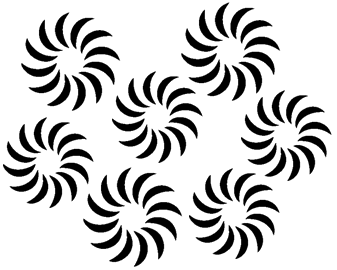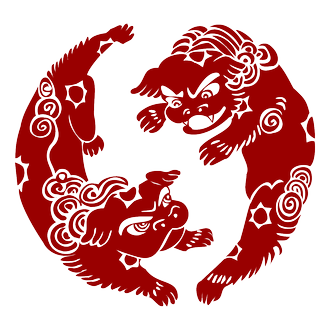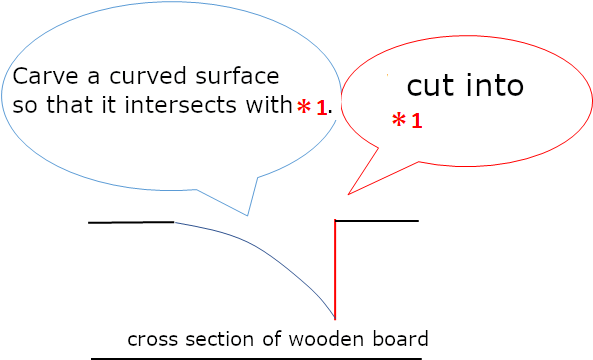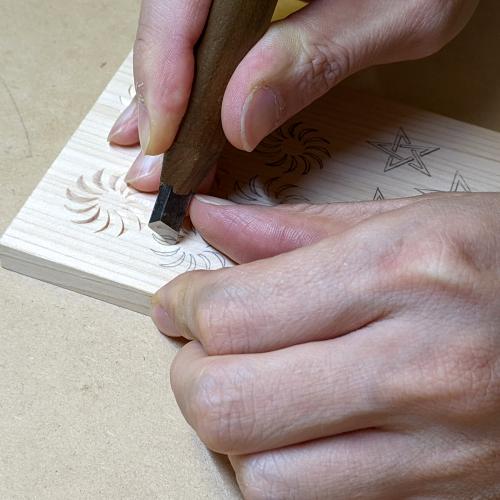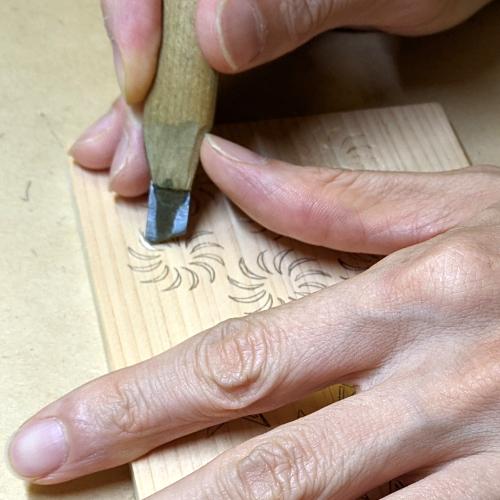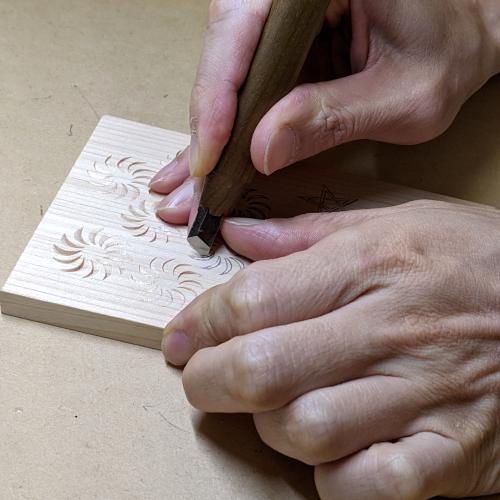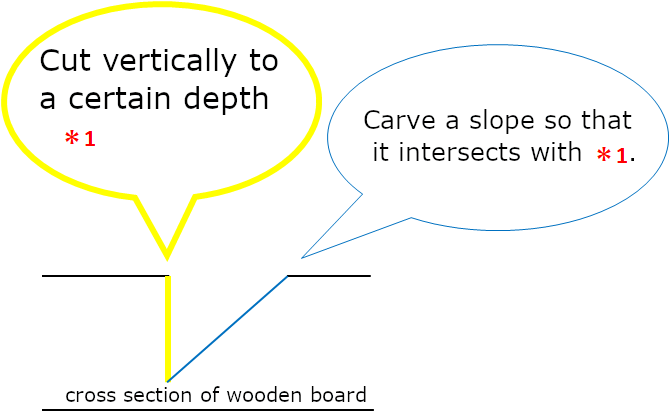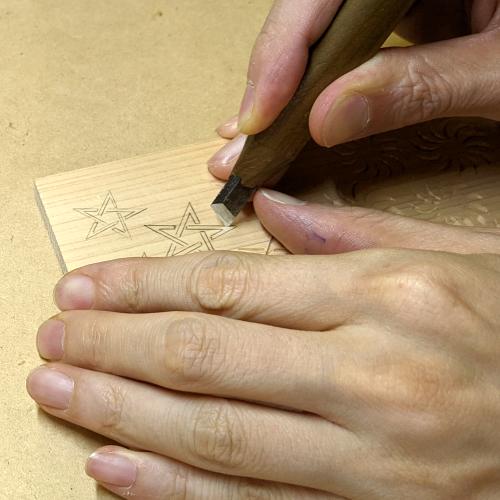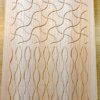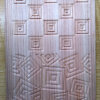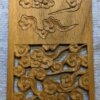How to carve patterns Part 10 ~Kemanmon and Gobosei~
— Carving with a Single Sharp Chisel
This time, we’ll continue using only a sharp chisel to carve.
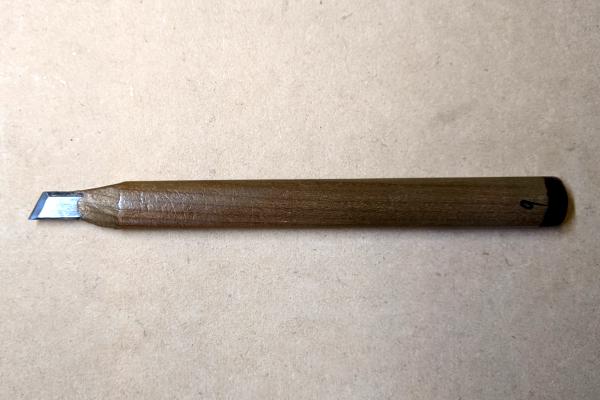
The patterns featured are:
Kemanmon (毛卍文) – a decorative motif inspired by the swirling mane of a Karajishi (mythical lion-dog from East Asian folklore).
Gobosei (五芒星) – the five-pointed star, long used as a protective talisman in Onmyōdō (the Way of Yin and Yang), closely associated with the Heian-era onmyōji, Abe no Seimei.
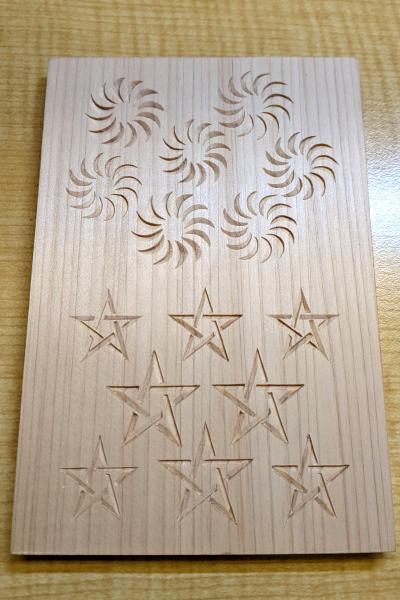
🌲 A Note on Technique
As with all carving patterns, if you don’t adjust your technique to match the characteristics of the wood, your carving won’t come out clean.
Feel the wood’s resistance as you carve — learning to listen to the material is key to refining both your technique and intuition.
Preparation
Use carbon paper to trace both the Kemanmon and Gobosei patterns onto a postcard-sized wooden board.
📥 The sketches can be downloaded here: PDF of Kemanmon and Gobosei
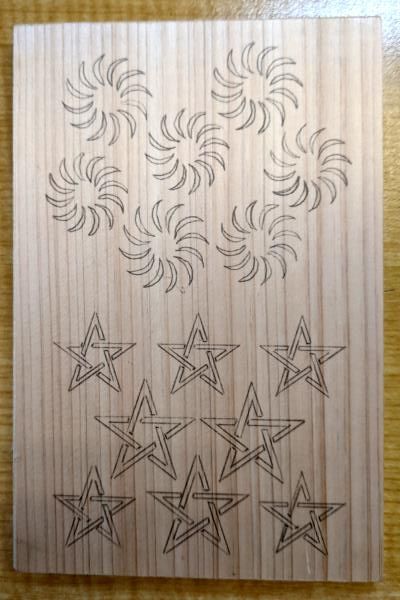
1. How to carve Kemanmon(Two Methods)
We’ll carve two types of crescent-shaped Kemanmon motifs using different approaches:
▶ Pattern 1: Outward-Curving Crescent
-
Use the sharp chisel to make an incision along the outer edge of the crescent.
-
Gradually deepen the cut along the red line, following the direction of the arrow.
-
Carve a curved surface that bulges outward, intersecting with the cut.
This time, we carve the Keiman pattern using two different carving methods.
For pattern 1, make a cut on the outside of the crescent shape with the sharp chisel, and use it to carve a curved surface that curves outward so that the cuts intersect . Make the cut at the red line, and make the cut gradually deeper in the direction of the arrow.
🔁 By carving from multiple angles, you create a smooth outward curve within the crescent.
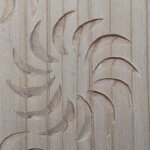
Pattern 2: Inward-Curving Crescent
-
Make an incision along the inner edge of the crescent.
-
As before, deepen the cut gradually along the red line, following the arrow.
-
Carve a curved surface that dips inward, intersecting the cut.
🎯 Finish Tip:
For both patterns, aim to create smooth, flowing curved surfaces. Take your time, and let the blade follow the natural movement of the design.

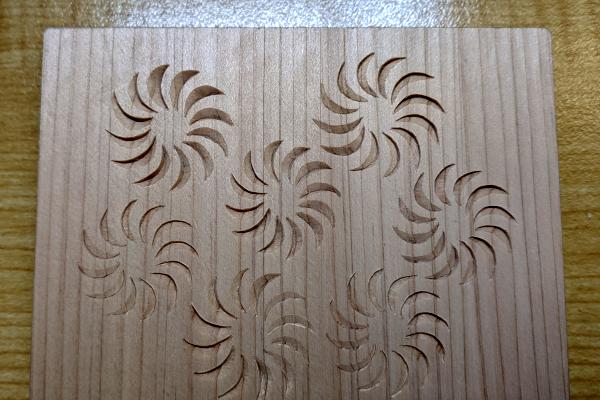
2. How to carve Gobosei
-
Using the sharp chisel, make cuts along the outside of the star.
-
On yellow lines, carve with a consistent depth.
-
On red lines, deepen the cuts gradually, following the arrows.
-
-
Next, carve the sloping surface inward so that it intersects cleanly with the incisions.
-
In detailed corners and tight spaces, use the tip of the chisel precisely for clean finishes.
🧭 The key to Gobosei is precision — even tiny imbalances can ruin the symmetry.
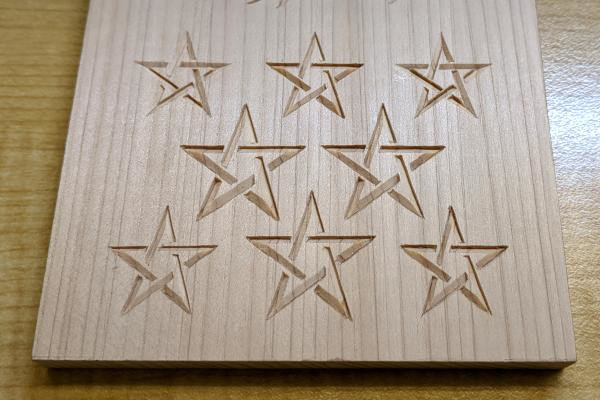
How to carve patterns
- From the lattice to the scales
- Raimon
- Asanoha and Sayagata
- Seigaiha and Sippo-Tsunagi
- Higaki and Kumikikko
- Mimasu-Tsunagi and Mimasu-Chirashi
- Ryusui
- Bundo-Tsunagi and Tatewaku
- Yamajimon and Misujidate
- Kemanmon and Gobosei ←Current page displayed
- Chidori and Chidori-Goshi
- Nejiume (Twisted plum)
- Kikubishi and Yaegiku
- Ichimatsu and Sankuzushi
- Kikko and Yagasuri
- Clouds
- Waves

